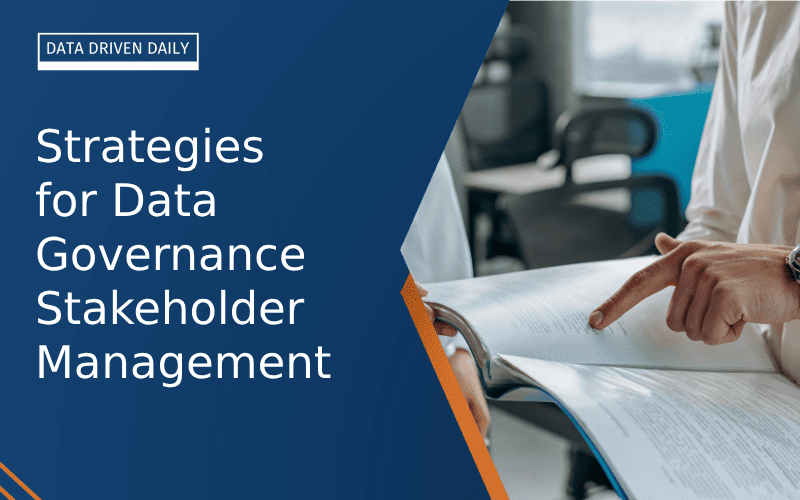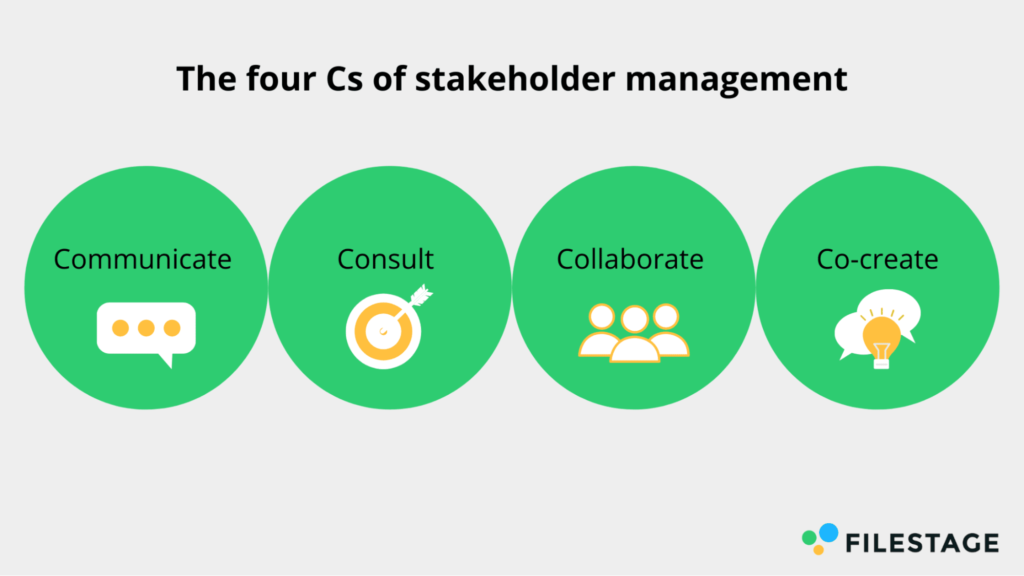When we talk about data governance stakeholder engagement, we’re diving into a crucial aspect of managing and optimizing the use of data within an organization.
It’s all about bringing various players to the table — from IT specialists to business unit leaders — ensuring everyone is on the same page regarding the collection, storage, usage, and security of data.

The Significance of Stakeholder Engagement in Data Governance
Engagement of stakeholders in data governance is not just a good-to-have; it’s a must. It ensures that data governance initiatives have broad support, align with organizational goals, and address the concerns and needs of different departments and individuals. Without effective engagement, data governance can become an isolated effort, lacking relevance and impact.
Key Benefits of Effective Engagement
- Enhanced Decision-Making: With all stakeholders contributing, decisions around data governance are more informed and comprehensive.
- Increased Compliance: Stakeholder engagement helps ensure that data governance policies adhere to relevant regulations and standards.
- Improved Data Quality: Input from diverse stakeholders leads to better standards and practices, enhancing the overall quality of data.
- Boosted Data Utilization: Engaged stakeholders are more likely to leverage data governance frameworks to extract value from data assets.

How to Engage Stakeholders in Data Governance
Identify and Prioritize Stakeholders
Start by mapping out who needs to be involved. Consider who uses data, who manages it, and who is affected by its usage. Prioritization is key — focus on stakeholders who have significant influence or a major stake in data outcomes.
Communicate Clearly and Regularly
Effective communication is the backbone of stakeholder engagement. It’s essential to convey the value of data governance clearly and how it benefits each stakeholder. Regular updates and open channels for feedback can foster a sense of ownership and participation.
Provide Training and Resources
Empowering stakeholders with the knowledge and tools they need is crucial. Tailored training sessions can help different groups understand data governance’s role and how they can contribute effectively.
Encourage Collaboration
Data governance should be a collaborative effort, not a top-down mandate. Encourage dialogue, idea sharing, and joint problem-solving to build a cohesive approach to data governance.
The Intersection of Data Governance and Cybersecurity
In the digital age, the lines between data governance and cybersecurity are increasingly blurred. Both domains aim to protect and manage digital assets, but their approaches and focuses differ. While data governance is about the overall management of data as a valuable resource, cybersecurity zeroes in on protecting data from unauthorized access and breaches.
The Role of Data Governance in Cybersecurity
Data governance frameworks can significantly bolster an organization’s cybersecurity posture. By defining clear data access policies, categorizing data based on sensitivity, and monitoring data usage, organizations can reduce vulnerabilities and enhance their defense mechanisms.
Collaboration for Enhanced Security
The synergy between data governance and cybersecurity teams can lead to a more resilient organization. By sharing insights, strategies, and data, both teams can develop a more nuanced understanding of the organization’s data landscape and its associated risks.
The Synergy Between Data Governance and Software Engineering
Software engineering and data governance may seem like distinct fields, but their intersection is critical for the development of secure, efficient, and reliable systems. Software engineers need to understand the governance frameworks that dictate how data should be handled, ensuring their solutions are compliant and secure.
Incorporating Data Governance Principles into Software Development
Integrating data governance principles early in the software development lifecycle can save time and reduce risks. It ensures that applications are designed with data quality, privacy, and compliance in mind, leading to more robust and trustworthy systems.
Strategies for Deepening Stakeholder Involvement in Data Governance
Deepening stakeholder involvement is vital for the adaptability and success of data governance frameworks. It goes beyond initial engagement, focusing on maintaining interest, commitment, and active participation over time.
Facilitate Stakeholder Ownership
Encouraging stakeholders to take ownership of data governance initiatives can significantly boost their engagement. When stakeholders feel a sense of responsibility and autonomy, they are more likely to invest time and effort into the success of data governance.
- Assign Roles and Responsibilities: Clearly defining roles within data governance helps stakeholders understand their impact and contribution.
- Empower Decision-Making: Allow stakeholders to make decisions within their purview, reinforcing their importance in the governance process.
Create Feedback Loops
Constructive feedback mechanisms are essential for continuous improvement in data governance. They provide stakeholders with a platform to voice concerns, suggest improvements, and feel heard.
- Regular Review Meetings: Hold periodic meetings to discuss the progress, challenges, and future directions of data governance.
- Surveys and Polls: Utilize anonymous surveys or polls to gather honest feedback and insights from stakeholders.
Recognize and Reward Contribution
Acknowledging the contributions of stakeholders can significantly boost morale and encourage continued participation. Recognition can come in various forms, from public acknowledgment in meetings to formal awards or incentives.
Integrating Data Governance with Business Strategy
Aligning data governance with business strategy ensures that data management efforts directly contribute to organizational goals. This alignment is crucial for gaining executive support and ensuring that data governance is perceived as a value driver rather than an overhead cost.
Link Data Governance Goals with Business Objectives
Ensure that data governance initiatives have clear, measurable goals that align with broader business objectives. This alignment helps stakeholders understand the direct impact of data governance on the organization’s success.
Involve Leadership in Data Governance
Executive sponsorship can dramatically enhance the visibility and importance of data governance within an organization. Leaders can champion data governance initiatives, providing the necessary support and resources for success.
Navigating the Challenges of Data Governance Stakeholder Engagement
Engaging stakeholders in data governance is not without its challenges. From varying levels of data literacy to competing priorities, several hurdles can impact the effectiveness of engagement strategies.
Addressing Varying Levels of Data Literacy
Not all stakeholders have the same level of understanding or interest in data. Tailoring communication and training to meet diverse needs can help bridge this gap.
- Customized Training Programs: Develop training sessions that cater to different levels of data literacy, ensuring that all stakeholders can contribute effectively.
- Simplifying Communication: Use clear, jargon-free language when discussing data governance topics, making the information accessible to all stakeholders.
Balancing Competing Priorities
Stakeholders often have their own set of priorities, which may not always align with data governance objectives. Finding common ground and demonstrating the mutual benefits of data governance can help mitigate this challenge.
- Highlighting Individual and Collective Gains: Show how data governance can help stakeholders achieve their goals while also benefiting the organization as a whole.
- Engaging in Compromise and Negotiation: Be prepared to negotiate and find compromises that align stakeholder interests with data governance aims.
Leveraging Technology to Enhance Stakeholder Engagement
In today’s digital age, various technological tools can facilitate and enhance the engagement of stakeholders in data governance.
Collaboration Platforms
Utilize collaboration platforms to create a centralized space where stakeholders can communicate, share documents, and track progress. These platforms can enhance transparency and make it easier for stakeholders to participate actively.
Data Governance Dashboards
Implement dashboards that provide real-time insights into data governance metrics, progress, and outcomes. These dashboards can help stakeholders stay informed and engaged with the governance process.
Training and E-Learning Tools
Online training modules and e-learning platforms can provide stakeholders with flexible options for learning about data governance, accommodating different schedules and learning preferences.
Future Trends in Data Governance Stakeholder Engagement
As data governance continues to evolve, so too will the strategies for engaging stakeholders. Staying ahead of these trends is crucial for maintaining effective and dynamic data governance frameworks.
Increasing Focus on Data Ethics
With growing awareness of data privacy and ethics, stakeholders are becoming more concerned about how data is used and governed. Data governance frameworks will need to increasingly address these ethical considerations to maintain stakeholder trust and engagement.
The Rise of AI and Automation
Artificial intelligence and automation are set to play a more significant role in data governance, potentially changing how stakeholders interact with data governance processes. While these technologies can streamline certain tasks, they will also require stakeholders to adapt and develop new skills.
Conclusion: Why Stakeholder Engagement is Crucial for Effective Data Governance
Engaging stakeholders in data governance is not a one-time task; it’s an ongoing journey that evolves with your organization. It requires patience, dedication, and a strategic approach, but the rewards are substantial. By fostering a culture of collaboration and transparency, organizations can harness the full potential of their data, drive innovation, and maintain a competitive edge in today’s data-driven landscape.
In essence, data governance stakeholder engagement is about creating a shared vision, where every voice is heard, and every concern is addressed. It’s about building a data governance framework that not only meets today’s needs but is also adaptable to the challenges and opportunities of tomorrow.
Ben is a full-time data leadership professional and a part-time blogger.
When he’s not writing articles for Data Driven Daily, Ben is a Head of Data Strategy at a large financial institution.
He has over 12 years’ experience in Banking and Financial Services, during which he has led large data engineering and business intelligence teams, managed cloud migration programs, and spearheaded regulatory change initiatives.